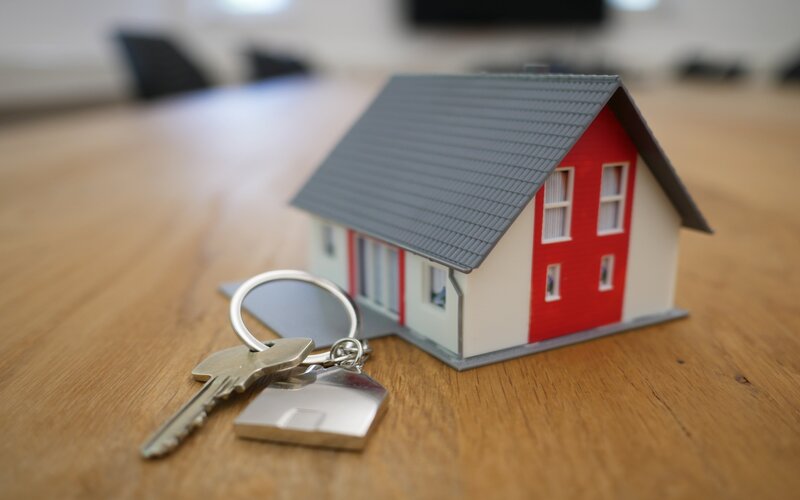How much money you can afford to borrow for a home loan depends on a few things, like the size of your deposit and the value of the property you want to buy.
Another factor lenders will consider when determining how much you can afford to borrow is your loan serviceability, which plays a crucial role in the home loan approval process.
Serviceability refers to a borrower's ability to repay a loan based on their income and expenses.
Buying a home or looking to refinance? The table below features home loans with some of the lowest interest rates on the market for owner occupiers.
| Lender | Home Loan | Interest Rate | Comparison Rate* | Monthly Repayment | Repayment type | Rate Type | Offset | Redraw | Ongoing Fees | Upfront Fees | Max LVR | Lump Sum Repayment | Extra Repayments | Split Loan Option | Tags | Features | Link | Compare | Promoted Product | Disclosure |
|---|---|---|---|---|---|---|---|---|---|---|---|---|---|---|---|---|---|---|---|---|
5.54% p.a. | 5.58% p.a. | $2,852 | Principal & Interest | Variable | $0 | $530 | 90% |
| Promoted | Disclosure | ||||||||||
5.49% p.a. | 5.40% p.a. | $2,836 | Principal & Interest | Variable | $0 | $0 | 80% |
| Promoted | Disclosure | ||||||||||
5.64% p.a. | 5.89% p.a. | $2,883 | Principal & Interest | Variable | $250 | $250 | 60% |
| Promoted | Disclosure | ||||||||||
5.64% p.a. | 5.89% p.a. | $2,883 | Principal & Interest | Variable | $248 | $350 | 60% |
| Disclosure |
What is loan serviceability?
Lenders are legally obligated to make sure that borrowers can afford to repay a loan under responsible lending rules set by the Australian Prudential Regulation Authority (APRA) and the Australian Securities and Investments Commission (ASIC).
APRA and ASIC keep a watchful eyes over financial institutions to make sure they are complying with responsible lending practices and putting checks and balances in place to ensure people aren't jumping into massive home loans they can't afford.
This is where loan serviceability comes into play.
Loan serviceability is essentially a calculation of your ability to meet your home loan repayments based on the size of the loan, your income and expenses.
Lenders have a few different methods of calculating your loan serviceability (we'll talk more about this later), but all are required to add what's known as a 'buffer rate' to the home loan interest rate they are offering after taking into account a borrowers' income and expenses.
This buffer essentially allows for the fact that interest rates can rise over a loan term, so the lender will want to ensure the borrower can still meet the repayments should interest rates rise.
Updated APRA serviceability buffer
Before July 2019, APRA expected banks to assess borrowers against a minimum interest rate of 7% p.a. This was later changed to a 2.5% buffer above the lender's current interest rate.
APRA now mandates that lenders apply a 3% serviceability buffer. This means if a lender offers a mortgage at 5.5%, they will assess whether you can still afford repayments at 8.5% (5.5% + 3%). \This ensures borrowers can still manage their repayments if interest rates increase.
How lenders calculate your loan serviceability
Many lenders calculate a borrower's serviceability by:
-
Adding up all sources of income (including wages, rental income, and investments).
-
Assessing outstanding debts (such as credit cards, personal loans, and other debts).
-
Accounting for living expenses (including groceries, utilities, and discretionary spending).
-
Factoring in the loan repayment at the higher serviceability buffer rate (current interest rate + 3%).
What counts as income?
Lenders assess income from multiple sources, including:
-
Salary and wages
-
Rental income (often discounted by 20-30%)
-
Dividends from shares or investments
-
Government benefits (some may only be partially counted)
But not all income is treated equally. Because rental and investment income can fluctuate, many lenders only consider 80% or less of these income streams.
Methods of calculating serviceability
There are three common methods lenders use to assess serviceability:
1. Debt-to-Income Ratio (DTI)
DTI = Total Debt ÷ Gross Annual Income
-
Most lenders prefer a DTI below 6, meaning your total debt should not exceed six times your annual income.
-
Some lenders may offer loans with a DTI of up to 7 for high-income borrowers.
2. Net Surplus Ratio (NSR)
NSR = (Income - Expenses) ÷ Income
-
This measures the percentage of income left over after all expenses are deducted.
-
A higher NSR means better serviceability.
3. Uncommitted Monthly Income (UMI)
UMI = Monthly Income - Monthly Expenses (including loan repayments)
-
This method calculates how much cash remains each month after all obligations are met.
Generally, most banks won't publicly disclose which method they use, which means you may get different serviceability calculations depending on which lender you go with.
Why is having a good home loan serviceability important?
Lenders are generally unwilling to approve loans for borrowers with poor serviceability. When assessing a loan application, lenders want to make sure the borrower can comfortably afford their monthly repayments.
This involves evaluating the applicant's income and existing financial commitments. By adding the potential home loan repayment to these obligations, lenders determine whether the borrower will still have enough funds to manage their overall financial responsibilities.
Lendi Chief Executive David Hyman told Savings.com.au having good home loan serviceability is extremely important in the borrowing process.
"The way banks think about that is they look at income and they look at all of your debt and commitment, and they apply various benchmarks to those to factor in good times and bad and ultimately work out how much you can borrow," Mr Hyman said.
"What that really means for individual borrowers is really a range, because it's different bank to bank.
"Ultimately, when you're going through either the refinance process or purchase process it's a key part of the process in terms of where you focus your efforts and what you're eligible for."
How can you improve your home loan serviceability?
No matter your level of home loan serviceability, there are a number of ways you can improve it:
1. Reduce existing debt
-
Pay down credit cards, personal loans and buy now, pay later (BNPL) debt before applying for a home loan.
-
Close unused credit cards - lenders consider your total credit limit, not just your balance.
-
Lower your credit card limit - a $20,000 limit can reduce borrowing power significantly.
2. Cut back on spending
-
Reduce discretionary spending on dining out, streaming services, and entertainment.
-
Track expenses to identify areas where you can save.
Lenders assess spending habits over time to ensure borrowers are not overextending themselves financially. Reducing discretionary expenses, such as luxury or non-essential purchases, can help lower overall spending. Cutting back on these items may improve financial stability and increase the likelihood of loan approval.
3. Budget as if you already have a mortgage
-
Live as if you're already making mortgage repayments.
-
Set aside 'hypothetical' mortgage payments in a savings account to prove financial discipline.
Mr Hyman suggests doing this at least six months before applying.
"It builds good financial habits and lowers your expense base, making you look better to lenders."
4. Improve your credit score
-
Check your credit report and correct any errors.
-
Pay bills on time to avoid late payment marks on your report.
-
Avoid payday loans - lenders view them as red flags.
Mr Hyman said sometimes people had credit card limits as high as $40,000 which would be looked upon unfavourably by lenders.
"Just reducing your overall credit card limit by $10,000 or $20,000, can have a massive impact on your borrowing power."
5. Increase your income
-
Negotiate a salary raise or take on additional work.
-
Consider a second income stream like freelancing, part-time work, or rental investments.
While increasing income is not always feasible, it can significantly boost your serviceability.
Mr Hyman said increasing your income is a viable way of improving your serviceability, but for obvious reasons is one of the less viable ways.
"There's a couple of obvious ways to improve your serviceability, increasing your income is one way but of course that's not always easy to achieve," Mr Justice said.
How long does it take to improve your home loan serviceability?
Mr Hyman said in the context of looking to buy a house or refinancing, improving your serviceability could happen in as little as six months if you reduce your expenses, pay down debt, and lower your credit card limits.
"If you're wanting to reduce your expenses and use that as a way to drive your serviceability up, that can be done and demonstrated in a six month period while you're still either saving for that deposit for the first time, or if you're building up extra equity," he said.
"Reducing things like credit card limits, those things can happen relatively immediately. So if you're sitting there with a $35,000 credit limit, and you only ever use five or ten grand at a time, calling the bank and cutting that down from $35,000 to $10,000, that can happen on the same day."
What's the difference between home loan serviceability and borrowing power?
Loan serviceability is your ability to afford loan repayments based on your income, expenses, and debts. Lenders check your loan serviceability to ensure you can afford to make the repayments, even if interest rates were to rise.
Borrowing power (or borrowing capacity) refers to the maximum amount a lender is willing to loan you, based on factors like your income, deposit, credit score and loan term.
-
Serviceability - can you afford the repayments?
-
Borrowing power - how much can you borrow?
Even if you have high borrowing power, poor serviceability (you have lots of debt or high expenses) can reduce your loan approval amount.

Ready, Set, Buy!
Learn everything you need to know about buying property – from choosing the right property and home loan, to the purchasing process, tips to save money and more!
With bonus Q&A sheet and Crossword!







 Bea Garcia
Bea Garcia
 Denise Raward
Denise Raward
 Harry O'Sullivan
Harry O'Sullivan
 Emma Duffy
Emma Duffy
 Brooke Cooper
Brooke Cooper

